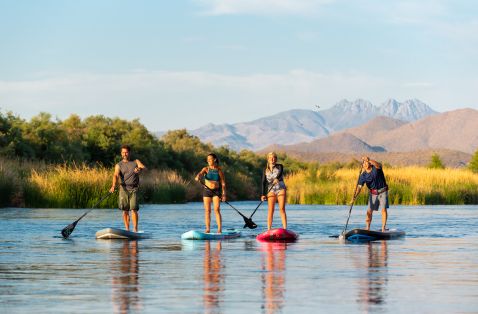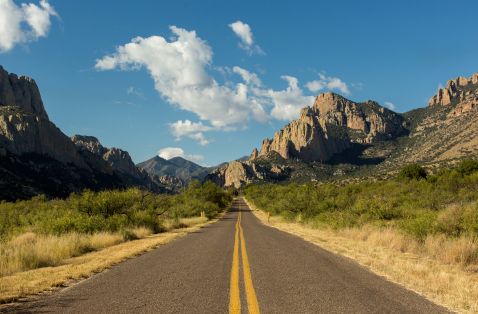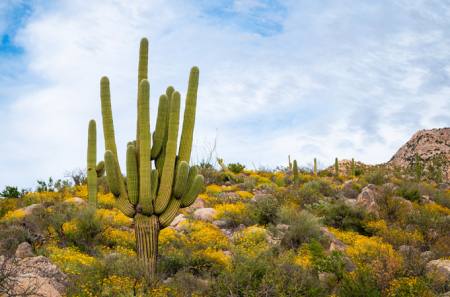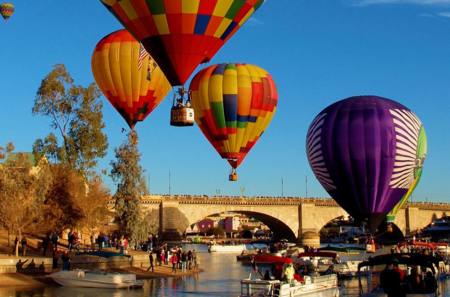Plan ahead
Before you go, plan ahead. This goes whether you are hiking in a group, but especially if you are on your own. Preparation, self-reliance, and common sense are crucial, and it's okay to be overly cautious when planning your hikes. Plan on taking twice as long to hike uphill as it takes to hike downhill.
- Know what your destination will be.
- Share your planned route with at least one person not hiking with you.
- Don't overestimate your capabilities.
- Hike intelligently. Engaging in risky behavior endangers not only yourself but potentially your entire party.
Be a lightweight
The less you carry, the more enjoyable your hike will be, so travel as lightly as possible. The heaviest items in your pack should be your food and (plenty of) water. Hiking sticks can take some of the stress off your legs.
Wear well-fitting and broken-in lightweight hiking boots. Wear sunscreen, sunglasses, and a hat. Bring a map and compass or handheld GPS unit, signal mirror, small trash bag, moleskin, and water purification tablets (as a backup). Bring a small lightweight flashlight and a change of batteries and a bulb, even if you only intend on hiking during the day.
Poop happens
When nature calls, and there's no restroom nearby, here's the rule: Bury your waste under 4–6 inches of mineral soil. Use that small trash bag we mentioned above to carry your toilet paper out with you. Or, buy one of several EPA-approved, pack-out systems that are sanitary and easy to use, such as GO Anywhere, Biffy Bags, and ReStop.
Leave the area as you found it; trash your trash, including biodegradable items, such as fruit peels and apple cores.
Stick to the trails
Always hike on sanctioned trails or identifiable routes and never shortcut switchbacks. In the event that those don’t exist, find a durable surface on which to hike—think hard rock, sand or gravel). Trails exist not just for your personal safety, but to preserve Arizona's delicate ecosystems and wildlife.
Avoid huffing and puffing
If you can talk while you are walking, you are walking at the perfect speed. When you huff and puff, your body doesn't get enough oxygen, which can deplete your energy reserves and make your legs feel heavy. You may even feel sick.
Walking uphill at a pace that allows you to walk and talk will help guarantee your body is getting the oxygen it needs. It may seem like you are walking too slow (sometimes taking only baby-sized steps when the trail is steep), but your energy reserves will last much longer, you'll enjoy your hike more, and you'll feel much better at its end.
Be kind to yourself
Do not exceed your normal level of physical activity or training. Limit your exertion and especially your exposure to the heat if you have asthma, heart problems, diabetes, knee, back or any other medical concern as trail conditions, such as altitude, the risk of dehydration, heat and strenuous activity may make these issues worse.
Take a break
A break of five to seven minutes every 30 to 60 minutes can remove about 20–30 percent of metabolic waste that would have built up in your legs while hiking, making them feel heavy and sluggish. Sit down and prop your legs up above the level of your heart and let gravity help drain that metabolic waste out of your legs.
Eat some food, drink some fluids, and take this break time to really enjoy and appreciate the view. These efficient breaks can really recharge your batteries. In the long run, these breaks will not slow you down.
No food, no fuel, no fun
Stay hydrated and eat often—twice more than you normally would. Eat before, during, and after your hike. Eat before you are hungry. Drink water before you are thirsty. No matter what the temperature, you need water and energy to keep going. Your best defense against illness and exhaustion is to eat a healthy breakfast, a snack every time you take a drink, and a rewarding full dinner at the end of the day. This is not a time to diet.
Hiking in Arizona takes a very large amount of energy (food). It may seem counterintuitive, but snacking on salty foods like nuts provides a good source of electrolytes to help your body. If you replace the water, but not the electrolytes that you have sweated out of your body, you can develop a serious and dangerous medical condition known as hyponatremia (water intoxication). If left untreated, it can lead to seizures and possibly death.
Adapted from the National Park Service.
Explore Arizona
More Inspiration
Sustainability
Leave No Trace
The Arizona Office of Tourism and the Leave No Trace Center for Outdoor Ethics© forged a partnership to promote sustainable tourism practices...
Must Do
Arizona's Easiest Trails and Activities for Beginners
Venturing into the great outdoors can seem a bit daunting at first. Here are some beginner-friendly suggestions to get you started and have you...
Outdoor Adventures
Trekking Arizona: the Arizona National Scenic Trail
From the desert to the mountains, the Arizona Trail touches five distinct biomes over 800 miles.
Family Activities
Epic Fall Road Trip: Cave Creek Canyon
Yosemite of Arizona' beckons birders, scientists, and hikers in search of gorgeous biodiversity.










